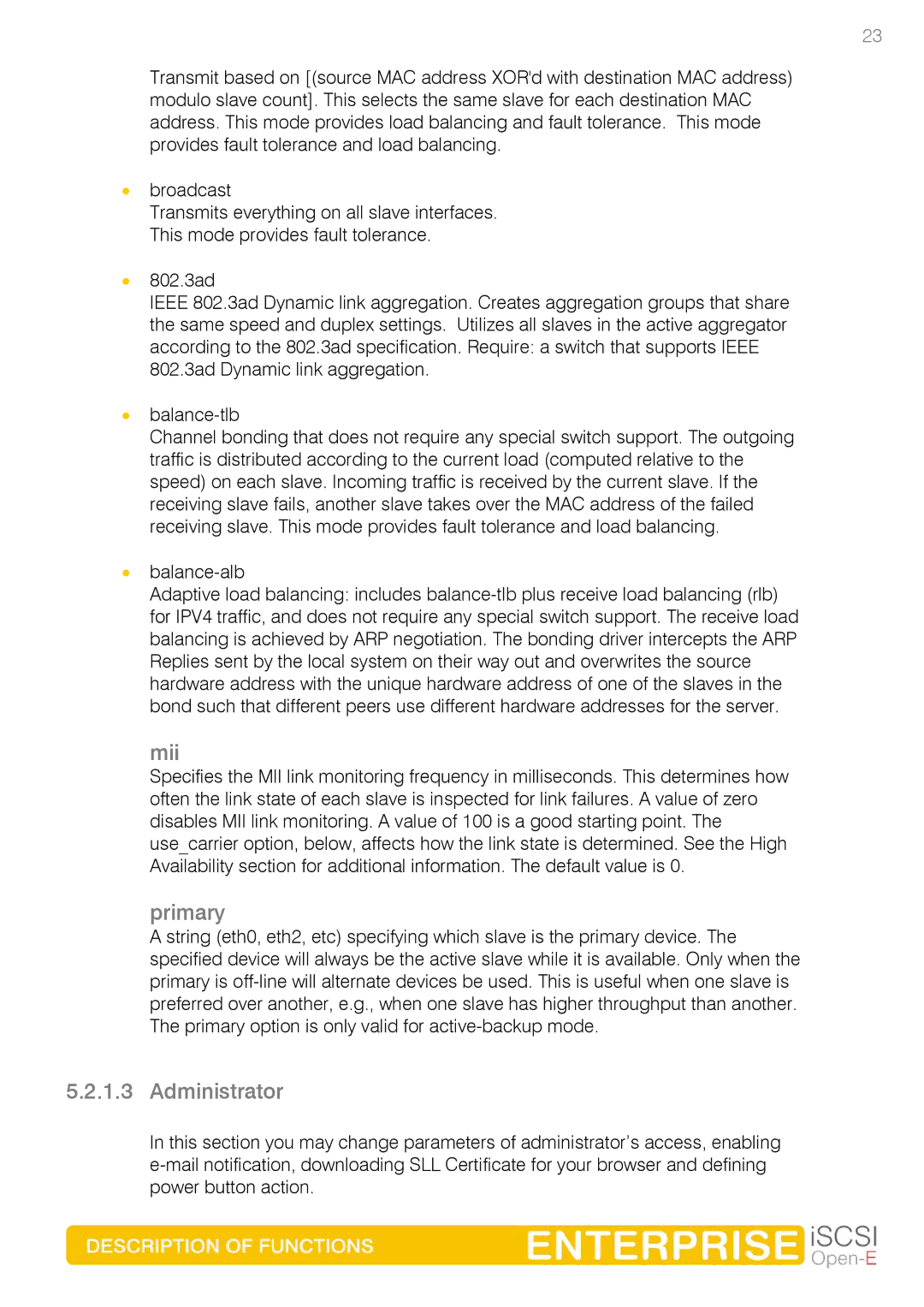23
Transmit based on [(source MAC address XOR'd with destination MAC address) modulo slave count]. This selects the same slave for each destination MAC address. This mode provides load balancing and fault tolerance. This mode provides fault tolerance and load balancing.
•broadcast
Transmits everything on all slave interfaces. This mode provides fault tolerance.
•802.3ad
IEEE 802.3ad Dynamic link aggregation. Creates aggregation groups that share the same speed and duplex settings. Utilizes all slaves in the active aggregator according to the 802.3ad specification. Require: a switch that supports IEEE 802.3ad Dynamic link aggregation.
•
Channel bonding that does not require any special switch support. The outgoing traffic is distributed according to the current load (computed relative to the speed) on each slave. Incoming traffic is received by the current slave. If the receiving slave fails, another slave takes over the MAC address of the failed receiving slave. This mode provides fault tolerance and load balancing.
•
Adaptive load balancing: includes
mii
Specifies the MII link monitoring frequency in milliseconds. This determines how often the link state of each slave is inspected for link failures. A value of zero disables MII link monitoring. A value of 100 is a good starting point. The use_carrier option, below, affects how the link state is determined. See the High Availability section for additional information. The default value is 0.
primary
A string (eth0, eth2, etc) specifying which slave is the primary device. The specified device will always be the active slave while it is available. Only when the primary is
5.2.1.3 Administrator
In this section you may change parameters of administrator’s access, enabling
